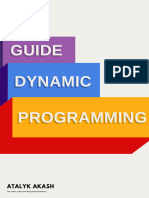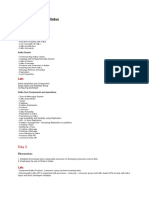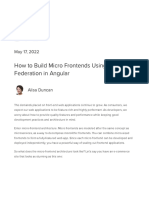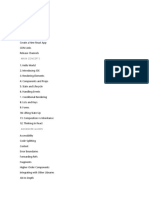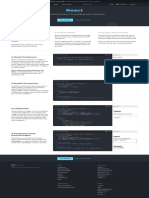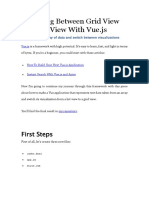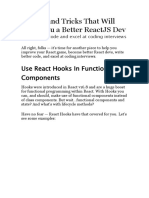0% found this document useful (1 vote)
177 views3 pagesReact + MobX Crash Course
MobX is a reactive state management library for React that allows direct state mutations while automatically updating the UI. It uses decorators like @observable to track state changes and @computed to derive state. Actions are used to batch state mutations. Reactions like autorun() and when() watch for observable updates and perform effects. MobX integrates with React using mobx-react to create observer components that automatically re-render when observables change without manual re-rendering.
Uploaded by
Jhonathan AntonioCopyright
© © All Rights Reserved
We take content rights seriously. If you suspect this is your content, claim it here.
Available Formats
Download as PDF, TXT or read online on Scribd
0% found this document useful (1 vote)
177 views3 pagesReact + MobX Crash Course
MobX is a reactive state management library for React that allows direct state mutations while automatically updating the UI. It uses decorators like @observable to track state changes and @computed to derive state. Actions are used to batch state mutations. Reactions like autorun() and when() watch for observable updates and perform effects. MobX integrates with React using mobx-react to create observer components that automatically re-render when observables change without manual re-rendering.
Uploaded by
Jhonathan AntonioCopyright
© © All Rights Reserved
We take content rights seriously. If you suspect this is your content, claim it here.
Available Formats
Download as PDF, TXT or read online on Scribd
/ 3

